You've heard the term before—KPI, or key performance indicator. But what does it actually mean? And more importantly, how can you use it to improve your marketing strategy?
In this post, we'll break down everything you need to know about KPIs, including what they are, how to track them, and how to start using them. So whether you're just starting out in marketing or you're looking for ways to optimize your current strategy, read on!
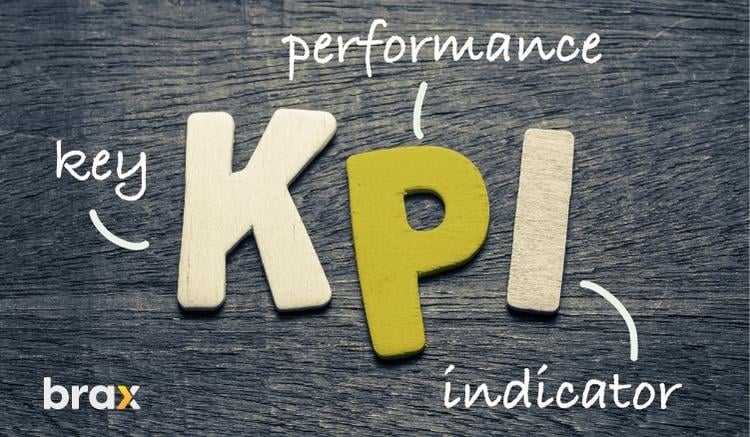
In this article, we'll discuss the following:
What Does KPI mean?
Benefits of Establishing and Using KPI
What are the Best KPIs for Marketing?
How Do You Know Which KPI to Use?
How to Track your Marketing KPIs
How to Start Using Marketing KPIs
Examples of Marketing KPIs at Work
Figuring out marketing KPIs can be overwhelming. There are so many to choose from, and it's hard to know which ones will give you the most accurate picture of your marketing performance.
It's tough to know whether you're on track if you don't have a benchmark to compare yourself against. Without any kind of goal or target, it's easy to coast along without making any real progress or showing any signs of growth.
KPI in marketing is key to figuring out whether your campaigns are effective or not. By setting measurable goals and tracking your progress towards them, you'll be able to make informed decisions about where to focus your efforts in order to see the best results.
Let's start by understanding what KPI is.
What does KPI mean?
KPI stands for Key Performance Indicator.
KPIs are quantitative measures that organizations use to track, monitor, and assess their progress and performance against their stated goals.
Key Performance Indicators (KPIs) can be used to measure all sorts of things, from financial indicators like revenue growth or profitability to operational indicators like quality control or customer satisfaction. This information can then be used to make decisions about where to allocate resources and where to make changes.
The important thing is that KPIs are carefully chosen to align with an organization's strategic objectives. That way, they can provide meaningful insights into whether or not those objectives are being met.
In short, KPIs are a valuable tool for any organization that wants to track its progress and ensure that it is on track to achieve its goals.
Examples of KPIs per Business Aspect
A KPI is a number that shows how well a company is doing in a specific area. They are used to track progress and see whether changes need to be made.
They can also be used to compare different companies or different parts of the same company. For example, if a company has two factories, it might use KPIs to see which one is doing better.
KPIs are also used to set goals. For example, a marketing team might want to increase its sales by 10% next year. To do this, it would set a KPI for sales and then track its progress over time.
Benefits of Establishing and Using KPIs
By definition, key performance indicators (KPIs) are a quantifiable measure of how well an organization is achieving its key objectives. In other words, KPIs tell you whether you're on track to reach your goals.

While there are endless possibilities for what KPIs you can track, some common examples include measures of financial performance, operational efficiency, customer satisfaction, and employee engagement. Appreciating successful employees with small gifts will grow their engagement and motivation levels.
There are many benefits of establishing and using KPIs; here are some:
1. Provides a Snapshot of an Organization’s Performance Against Its Goals
Key performance indicators can provide a snapshot of how well an organization is performing against its goals. By tracking KPIs, organizations can identify areas where they are falling behind and take corrective action.
Choosing the right KPIs is crucial to getting accurate information about organizational performance.
If an organization sets too many KPIs, it can be difficult to track and interpret the data. On the other hand, if an organization only sets a few KPIs, it may miss important information about its overall performance.
The best approach is to choose a handful of KPIs that are most relevant to the organization's goals and make sure that the data collected is accurately analyzed. When used properly, KPIs can provide valuable insights into an organization's performance and help guide decision-making.
2. Helps to focus and prioritize efforts
KPIs help businesses focus their efforts and prioritize their goals. By tracking KPIs, businesses can see which areas are performing well and which need improvement.
KPIs can be used at both the organizational level (to track overall progress towards strategic goals) and the individual level (to identify areas where employees need more support). When used effectively, KPIs can help organizations achieve their objectives while also providing valuable insights into areas of strengths and weaknesses.
3. Enables comparison between organizations or parts of the same organization
KPIs are a way of measuring and comparing the performance of organizations or parts of the same organization, as we've mentioned in the example of KPIs based on business aspects. They can be used to compare the performance of different organizations or different parts of the same organization.
For example, a company might track the number of customer complaints received per month in order to compare its customer service quality across different departments.
KPIs can also be used to benchmark the performance of an organization against its competitors. By tracking KPIs, organizations can identify areas where they need to improve and set goals for future performance.
4. Provide a way to track progress over time
There's no shortage of things to worry about when you're running a business. Are you making enough sales? Are your expenses getting out of control? Are your employees happy?
It can be tough to keep track of everything, and that's where KPIs come in. Key performance indicators provide a way to track progress over time and see whether the improvements that have been made are having the desired effect.
By tracking KPIs, you can identify problems early and make changes before they cause too much damage. And if things are going well, you can take steps to keep the momentum going.
So how do you choose the right KPIs for your business? That depends on your goals. If you're trying to increase sales, for example, you might track KPIs like customer satisfaction or conversion rates. If you're trying to reduce costs, you might track KPIs like product defects, employee turnover, or advertising costs.
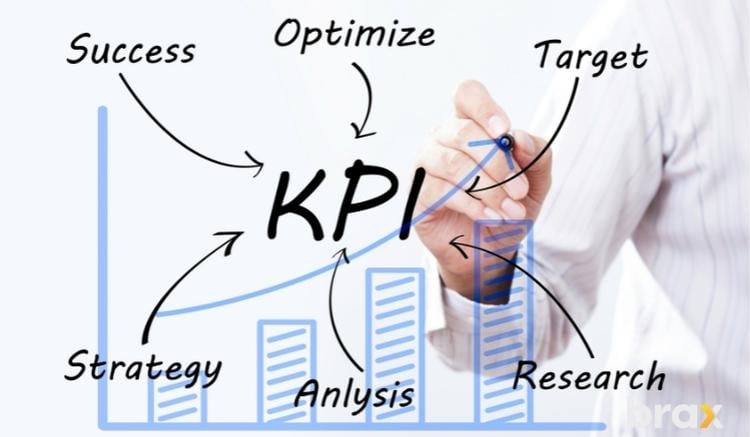
5. KPIs can help to foster a culture of accountability within an organization
While there are KPIs for every imaginable aspect of business operations, they are often used to gauge employee performance. For example, a sales team might be given KPIs around revenue targets, while a customer service team might be evaluated on measures such as first call resolution rate or customer satisfaction scores.
By setting clear and achievable KPIs, businesses can foster a culture of accountability where employees understand what is expected of them and are motivated to meet those expectations.
Furthermore, regular monitoring of KPIs can help to identify areas of improvement and ensure that employees are held accountable for their results. In short, KPIs are a powerful tool for driving organizational success.
When used correctly, they can help businesses to achieve their goals and create a more positive and productive work environment.
6. Helps you make data-driven decisions
By making data-driven decisions, KPIs can help organizations avoid the costly mistakes that can be made when basing decisions on gut feel or intuition alone.
As a business owner, you know that data is important. But what good is data if you don't know how to use it? That's where KPIs come in. KPIs are a way of measuring progress and determining whether you're on track to meet your goals. By tracking these, you can make data-driven decisions that will help your business succeed.
However, make sure your KPIs are actionable. The whole point of tracking them is to be able to take action based on the data. If your KPIs aren't actionable, they're not going to do you much good.
All in all, KPIs can be incredibly helpful in guiding your business decisions. By selecting relevant, measurable, and actionable KPIs, you can ensure that you're using data to its full potential.
What are the Best KPIs for Marketing?
There's no one-size-fits-all answer to this question, as the best KPIs for marketing will vary depending on the goals and objectives of your specific marketing campaigns. By tracking these metrics, you can get a good sense of how effectively your marketing efforts are performing and where you may need to make adjustments.
Of course, it's also important to keep in mind that not all KPIs are created equal. Some will be more important than others, depending on your particular business goals.
So, it's important to choose the marketing KPIs that are most relevant to your marketing team and focus on those. With that said, if you're not sure where to start, these marketing KPIs below are a good place to begin measuring your marketing success.
Before we dive in, take note that there are two types of marketing KPIs, and these are the basic and calculated metrics. The basic ones are those you can track while the calculated ones are those that have been computed from the basic ones to evaluate better.
Here are some of the most important basic KPIs to track for online marketing:
Website Traffic
Website traffic is often used as a KPI to measure the success of online businesses. You can measure both paid and organic traffic.
However, it is important to understand that not all website traffic is created equal.
Different types of visitors can have different levels of engagement and value, so it is important to track the right metrics in order to get an accurate picture of your website's performance.
For example, unique visitors and pageviews are two of the most commonly tracked website traffic metrics. However, unique visitors only give you a snapshot of the total number of people who have visited your site, while pageviews tell you how many times those visitors have viewed your pages.
As a result, pageviews are generally a more informative metric when it comes to gauging the success of your website.
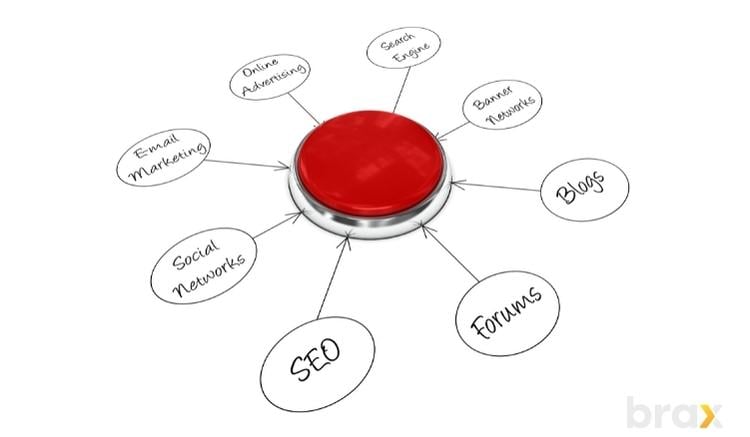
In addition to tracking the right metrics, it is also important to track your website traffic over time in order to see trends and identify potential problems.
By understanding how your website traffic fluctuates, you can make changes to improve your site's performance and ensure that your business is on track for success.
Leads Generated
A lead is defined as a person who has shown interest in your product or service in some way, shape, or form. This means that they are potential customers who could be interested in what you're offering. In short, it is a metric that monitors customer acquisition.
There are a number of ways to generate leads, such as through online ads, social media posts, or even offline methods like tradeshows or print advertisements. Regardless of how you generate leads, it's important to track them so you can gauge the effectiveness of your marketing efforts.
The number of leads generated is a key performance indicator (KPI) that can give you valuable insights into your marketing campaigns. If you notice that the number of leads generated is increasing, it's a good sign that your marketing efforts are working.
On the other hand, if the number of leads generated decreases, it's a sign that something needs to be changed in your marketing strategy.
It is important to remember that not all leads will result in sales, so the number of sales should also be tracked and compared to the number of leads.
In addition, lead quality should be considered when evaluating lead generation efforts; a large number of low-quality leads is not as valuable as a smaller number of high-quality leads.
As such, tracking the number of leads generated and their quality is an essential part of any successful marketing campaign.
Social Media Engagement
When it comes to social media, engagement is everything. After all, what's the point of sharing content if no one is going to see it, let alone interact with it? That's why more and more businesses are using social media engagement as a KPI.
By tracking the number of likes, comments, and shares their posts receive, they can get a better idea of which content is resonating with their audience and adjust their strategy accordingly.
Interestingly, research has shown that there's a direct correlation between social media engagement and revenue. In other words, the more engaged your audience is on social media, the more likely they are to actually convert into paying customers. This is why if a company finds their engagement on social networks to be low, they resort to social media advertising.
So if you're not already tracking social media engagement as a KPI, now is the time to start. Your bottom line will thank you for it!
Number of Sales or Subscriptions
Sales are the lifeblood of any business. It is the primary mechanism through which businesses generate revenue and, ultimately, profit. As such, it should come as no surprise that the number of sales made by a company is one of the most important marketing KPIs. There are a number of reasons for this.

First, sales numbers provide an objective measure of customer demand. If a company is selling a lot of products, it is likely that customers are interested in what it has to offer.
Second, sales numbers can be used to track progress over time. By comparing sales figures from month to month or year to year, companies can get a sense of whether they are growing or stagnating.
Finally, sales numbers can be used to inform marketing decisions. For example, if a company is selling more products in one region than another, it may decide to focus its marketing efforts on that region. In short, sales numbers are a key metric that all businesses should track closely.
Revenue
One of the most important basic KPIs is the amount of revenue generated. After all, what's the point of marketing if it's not generating more revenue for the business?
Marketing campaigns that generate a lot of leads but fail to convert them into paying customers will have a low revenue KPI, while campaigns that generate fewer leads but have a higher conversion rate will have a higher revenue KPI.
The key to maximizing revenue from marketing campaigns is to find the right balance between quantity and quality of leads and to ensure that the sales team is able to effectively close those leads.
Now, here are some of the most important calculated KPIs to track for online marketing:
Click-Thru Rate (CTR)
Click-through rate (CTR) is a key performance indicator (KPI) that measures the success of an online marketing campaign. CTR is calculated by dividing the number of clicks on a link by the number of times the link was viewed.
For example, if a banner ad is clicked 100 times and viewed 1000 times, the CTR would be 10%. CTR is an important metric because it can indicate whether or not your target audience is interested in your product or service.
A low CTR could mean that your ad is not relevant to your target audience, while a high CTR could indicate that your ad is effective and generating interest. There are a number of factors that can affect CTR, including the placement of your ad, the design of your ad, and the overall quality of your campaign.
There are a few things to keep in mind when using CTR as a KPI.
First, it's important to set realistic expectations. The average CTR for a display ad is around 0.05%, while the average CTR for a native ad is around 0.16% to 0.38%, depending on the device. So if you're seeing CTRs that are significantly below these averages, it could be an indication that something is off with your campaign. Of course, don't forget to look into industry averages.
Second, CTR can vary depending on the type of campaign you're running and the platform you're running it on. For example, Facebook ads tend to have higher CTRs than Google Ads. And brand awareness campaigns tend to have lower CTRs than direct response campaigns. So make sure you're comparing apples to apples when looking at your CTRs.
By tracking CTR, you can make adjustments to improve the effectiveness of your online marketing campaigns.
Cost per Lead (CPL) or Cost per Acquisition (CPA)
There are a number of different ways to measure the success of your marketing campaigns, and one of the most popular is to use cost per lead (CPL) or cost per acquisition (CPA). Both of these metrics can be very useful in assessing the effectiveness of your marketing efforts, but it's important to understand the difference between them.
Cost per lead simply refers to the amount of money you spend on generating qualified leads. This metric is often used in pay-per-click (PPC) campaigns, where you're charged for each click on your ad. It's also a good metric to use if you're selling products or services online, as you can track how much it costs you to bring each new customer to your website.
Cost per acquisition, on the other hand, looks at the amount of money you spend to acquire each new customer. This metric takes into account not only the cost of acquiring the qualified leads, but also any other associated costs, such as conversion rates and product costs. If you're selling high-priced items, then CPA is likely to be a more important metric than CPL.
Conversion Rate
Conversion rate is a key performance indicator (KPI) that measures the percentage of visitors to a website who take a desired action (a conversion). This action could be anything from subscribing to a newsletter to making a purchase.
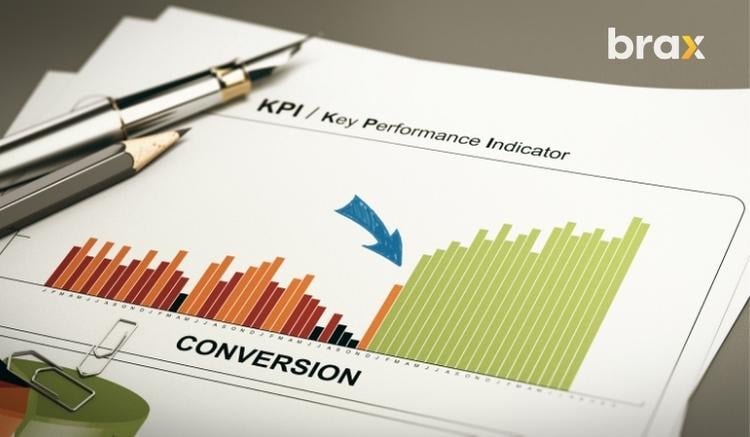
Conversion rate is important because it allows you to track the effectiveness of your website and marketing campaigns. If your conversion rate is low, it could be an indication that something is wrong with your website or that your marketing efforts are not reaching the right audience.
Conversely, a high conversion rate could mean that your website is performing well and that your marketing is on target. There are many factors that can affect conversion rate, so it's important to track this KPI over time to get an accurate picture of your website's performance.
Some people swear by conversion rate as a key performance indicator (KPI). After all, it's a simple way to measure how well your site is performing in terms of generating leads or sales. But there are also plenty of critics who argue that conversion rate is a vanity metric that doesn't tell you anything about the quality of your leads or customers.
So which camp is right? Well, as with most things in life, the answer is probably somewhere in the middle. Conversion rate can be a useful metric, but it's important to understand its limitations.
For example, conversion rate doesn't take into account the number of visitors who leave your site without taking any action. It also doesn't account for the quality of the leads or customers that you're generating.
So while conversion rate can be a helpful KPI, it should only be one part of a larger optimization strategy.
Return on Investment (ROI)
ROI is an essential tool for any business owner or manager. It allows you to compare the profitability of different investments, and make decisions accordingly. For example, if you're considering two different advertising campaigns, you can use ROI to see which one is likely to be more profitable.
There are a few different ways to calculate ROI. The most basic method is to simply take the difference between the amount of money you invested and the amount of money you made back, and then divide that by the amount of money you invested.
However, this doesn't take into account the time value of money, so it's not always accurate.
A more accurate way to calculate ROI is to use the net present value method. This takes into account the time value of money and gives you a more accurate picture of how profitable an investment is likely to be.
For example, if a marketing team invests $100 in a new marketing campaign and the campaign generates $500 in revenue, the company's ROI would be 400%.
There are several advantages to using ROI as a key performance indicator.
First, it is a quantifiable metric that can be used to compare different investments.
Second, it takes into account both the initial investment and the return, providing a more complete picture than metrics like profitability or return on assets.
Finally, ROI is relatively easy to calculate, making it accessible to businesses of all sizes.
Despite its advantages, ROI is not without its limitations. Perhaps the most significant limitation is that it only measures financial outcomes.
This can be problematic if an investment generates non-financial benefits, such as increased brand awareness or customer satisfaction.
Additionally, businesses should be aware that past performance is not necessarily indicative of future results. As such, ROI should be used as one tool among many when making decisions about where to invest company resources.
Whichever method you use, ROI is a valuable tool for making investment decisions. It allows you to compare different options and make sure you're getting the most bang for your buck.
Net Profit
Profit is one of the most important marketing KPIs because it directly measures how effective a company's marketing efforts are in terms of generating sales.
Net Profit is computed as Profit minus Cost per Acquisition and Product/Service Cost.
There are a few different ways to measure profit generated from marketing activities. The first is to track the gross margin for each customer acquired through marketing channels. This number can be calculated by subtracting the advertising and marketing costs associated with acquiring the customer from the customer's total purchase price.
The second way to measure revenue generated is to track the lifetime value of each customer acquired through marketing channels. This number represents the total amount of revenue that a customer will generate for the company over the course of their relationship with the company. By tracking both of these numbers, companies can get a good sense of how profitable their marketing efforts are.
Of course, profit is not everything. Marketing also needs to generate leads and customers in order to be successful. However, profit is a very important KPI for evaluating marketing success because it shows how effective a company's marketing efforts are at generating revenue.
How Do You Know Which KPI to Use?
Marketing is all about creating relationships and driving sales. And while there are a lot of different ways to measure marketing success, some key performance indicators (KPIs) are more important than others. To start, any good marketing KPI should be aligned with business objectives.
For example, if your goal is to increase brand awareness, then you would want to track metrics like web traffic or social media engagement. If you're looking to drive sales, on the other hand, you'll want to focus on marketing KPIs like conversion rate or return on investment (ROI).
Additionally, it's important to choose KPIs that are specific, measurable, achievable, relevant, and time-bound (SMART).

SMART Marketing KPIs
Let's break each of those down a little further:
Specific
A good KPI should target a specific area of your business. You might want to track customer satisfaction levels, employee productivity, or sales figures. Whatever it is, make sure it's well-defined.
Measurable
It should be easy to measure your KPI so you can track progress over time. For example, if you're tracking customer satisfaction levels, you might ask customers to rate their experience on a scale of 1 to 5.
Achievable
Choose a KPI that's ambitious but achievable. There's no point in setting a goal that's impossible to reach.
Relevant
Make sure your KPI is relevant to your business goals. If you're trying to increase sales, then tracking website traffic isn't going to be very helpful.
How to Track your Marketing KPIs
Anyone in charge of marketing knows that it can be tough to stay on top of everything. Marketing campaigns are complex beasts made up of myriad moving parts.
If you're still using spreadsheets for this, you may end up going crazy trying to make sense of everything. Plus, if you're just getting started, you will have to figure out how to set the data up to an understandable output, not to mention set up calculations to compute calculated KPIs.
So what can you use?
Fortunately, there are multiple tracking platforms that can do this for you, depending on your needs. Some platforms are better for small businesses, while others are geared towards enterprise companies.
Here are a few of our favorite marketing KPI tracking platforms:
Google Analytics
Google Analytics is a free platform that gives you insights into how people find and use your website. It can be used to track KPIs like web traffic, conversion rate, and bounce rate.
KISSmetrics
KISSmetrics is a paid platform that provides detailed data about individual customers and their interactions with your business. This is useful for tracking things like customer lifetime value and customer churn rate.
Brax
Brax is a paid platform that helps you track, segment, and engage with your customers across multiple channels. Whether you are promoting via native ads or social media is your top choice, you can use it to monitor and optimize your campaigns. This is useful for tracking KPIs like customer engagement and customer lifetime value.
On top of that, Brax allows you to create custom KPIs in case the standard KPIs don't work for you. Click here for a free trial of Brax and find out how it can help you monitor your ads' KPIs.
No matter which platform you choose, make sure you're tracking the right KPIs for your business. And if you're not sure where to start, our go-to guide will help you choose the best marketing KPIs for your needs.
Now that we've gone over what marketing KPIs are and how to choose them, it's time to talk about how to use them.
How to Start Using Marketing KPIs
Marketing is a lot like driving a car: if you don't know where you're going, any road will get you there. Starting to use marketing KPIs can seem like a daunting task, but it doesn't have to be.
In fact, once you get the hang of it, using KPIs can be a huge help in achieving your marketing goals. Here are a few basic steps to get you started:
1. Set Goals
There's no shortage of advice out there on how to set goals. But when it comes to marketing KPIs, the process can be a bit more complicated.

Here’s how you can set goals for your marketing KPIs:
-
Start by taking a step back and evaluating your overall business goals.
What are you trying to achieve? Once you have a clear understanding of your endgame, you can start setting goals for your marketing KPIs that will help you get there.
-
Next, take a look at your past performance.
What have been your strongest performing marketing channels? Identify any areas that need improvement and set goals accordingly.
-
Be realistic in your goal setting.
It's important to challenge yourself, but if your goals are unattainable, you're only setting yourself up for disappointment. Shoot for the stars, but make sure your feet are firmly planted on the ground.
-
Finally, don't forget to review and adjust your goals on a regular basis.
As your business grows and changes, so too should your marketing KPIs. By staying flexible and adaptable, you'll be sure to hit your targets.
2. Track Progress
In order to ensure that your marketing KPIs are on track, it is vital to establish a system for tracking their growth and progress. There are a number of different ways that you can do this, but one of the most effective is to use a tracker like those we've mentioned above.
This will allow you to track the progress of each KPI over time and spot any trends that may be emerging. It is also crucial to set up some way to measure progress against targets.
This could involve setting up weekly or monthly targets and then measuring actual performance against these targets. By doing this, you will be able to see how close you are to achieving your desired results.
If you find that you are consistently falling short of your targets, then it may be necessary to make some changes to your marketing strategy. Tracking the progress of your marketing KPIs is essential if you want to ensure that they are performing as effectively as possible.
By using a paid and organic marketing tracker, setting up targets, and measuring progress against these targets, you can ensure that your marketing strategy is on track and making the progress that you desire.
Optimize and Make Changes
If you're not seeing the results you want in a specific time frame, make changes to your marketing strategy. Try new things and see what works best for your business.
For example, if you find that one of your marketing channels is consistently underperforming, you may need to consider cutting back on your investment. Conversely, if you find that a particular KPI is consistently outperforming its target, then you may want to increase your investment in this area.
It is essential to be flexible in your approach and willing to make changes when necessary. The key is to always be testing and experimenting so that you can optimize your marketing strategy for maximum results.
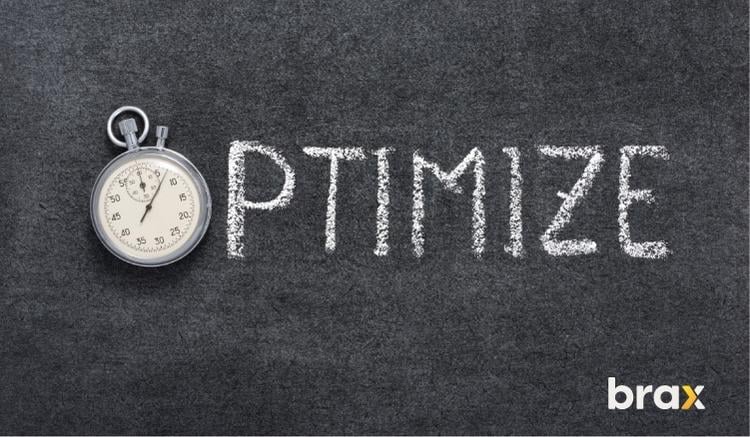
Marketing KPIs are a vital part of any marketing strategy. By understanding what they are, how to choose them, and how to use them, you can ensure that your marketing efforts are as effective as possible.
Examples of Marketing KPIs at Work
Now that we've gone through everything in theory, let's go over real-life examples of marketing KPI applications in businesses. What better way than to look at our own case studies?
Tommy Chong's CBD Case Study
In this case study, Tommy Chong's CBD focused on three KPIs for their native advertising campaigns on Revcontent. These are:
- Cost per click
- ROI
- Profit
The company spends at least $50,000 in daily ad spend for native advertising alone. When they used Brax, they saw a significant increase in ROI as well as a reduction in CPC by finding the sources that deliver the most profits at a lesser cost.
Retyche Giveaway Campaign
In this case study, Brax focused on helping Retyche get back its investment in using Brax tools on top of advertising spending. To build brand awareness and eventually get sales, the team opted to run a contest on social media platforms, particularly Meta properties.

During this marketing campaign, the KPIs focused on were:
- Number of Leads
- Cost per Acquisition (CPA)
- Number of sales
- ROI per platform
With an investment of $2000 in ads, Retyche earned over 908 leads, with 106 sales that totaled over $115,000 in revenue.
It was also found that Instagram performed best.
The Scent Market Free Shipping Campaign
Just like Retyche, The Scent Market ad campaign focused on social media giants Facebook and Instagram. The goal was to increase sales since the after-holidays are the slowest months of the year for the eCommerce brand.

The free shipping campaign focused on the following KPIs:
- Social media engagement in terms of clicks
- Number of conversions
- Total revenue
The Facebook ad campaign generated 270 clicks and 250 conversions, which attracted over $26,000 in sales.
The Instagram Stories ad campaign generated 205 clicks and 83 conversions, which brought about over $8,000 in sales.
Conclusion
So there you have it, everything you need to know about KPI in marketing and how to use it. It can be a little daunting at first, but once you get the hang of things, it’s easy to see just how valuable using KPIs can be for your business.
And if you ever get stuck or don’t know which KPI to use, never fear, Brax is here! We are experts in all things data-related, and we want nothing more than to help our clients achieve their goals.
Book a free demo today, and let us show you how Brax can help monitor your marketing KPIs so that you stay on track and reach your targets.
Thanks for reading!
If you enjoyed this article, you might also like our other articles on marketing:
- Digital Marketing Fundamentals: What Every Pro Advertiser Should Know
- Self Service vs Managed Service on Social Media and Native Advertising
- Fundamental SEO Hack: Why You Shouldn’t Joke With Outbound Links
- 7 Tips to Attracting the Perfect Customer
- Using the Theory of Loss Aversion in Marketing To Gain More Customers

